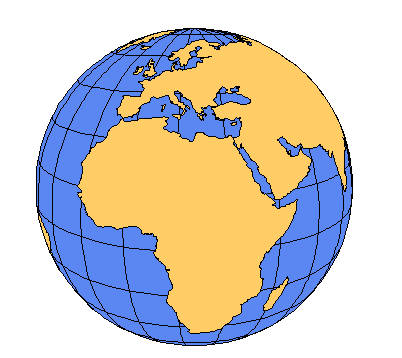Synopsis
Vision and mission statements have a unique relationship with three different tiers of values: core values, strategic values, and operational values. Core values are independent of vision and mission. They are constant over time, even if the company's vision and mission are periodically modified. Because vision and strategy are so closely connected, a change in the company's vision may compel a change in its strategic values. Similarly, a change in the mission statement may force a rethinking of operational values. This is why the development of vision and mission statement should be done in close dialogue with corporate values. A case study at the end of Part 3 illustrates this interplay of values, vision, and mission.Author: Mike Armour
Values, Vision, Mission — How to Get Them Right Part 3 of a Four-Part Tutorial
Values: Navigational Buoys for Your Business

Whenever you enter or leave a harbor, navigational buoys mark the channel — red buoys on one side, green buoys on the other. So long as a vessel stays between the buoys, there is no risk of running aground.
For businesses (or any other human enterprise) our values serve as our navigational buoys. They keep us in the right channel moving forward. For older entrepreneurs, identifying their core values is often a very straightforward process. They have had enough life experiences that their orchestrating values are well-established in their minds. And when they start a small business, these values flow into its operation.For businesses our values serve as our navigational buoys. They keep us in the right channel moving forward.
- First, the exercise itself forces provocative reflection on which of your many values are truly most important to you. This reflection gives you greater clarity on which values you consider primary, which you consider secondary.
- Second, as you add employees — beginning with the very first one — it's vital for them to be attuned to your key values. Otherwise their decisions and actions may not always be consistent with your orchestrating values. Their failure to honor your values here and there can eventually nudge the business outside of the marker buoys.
- And third, your core values should serve as marker buoys for your vision and mission statements. That is, your vision statement should always be consistent with your core values. And since your mission statement should be an extension of your vision statement, values continue to be marker buoys at every stage of the planning process.
Your core values should serve as marker buoys for your vision and mission statements.
Classifying Business Values By Type
In this tutorial, our model for defining vision and mission statements calls into play three sets of values: core values, strategic values, and operational values. Together these form what I refer to as the "orchestrating values" for your business. For many years I was not sufficiently clear in my own mind about the distinction between core values, strategic values, and operational values. I just lumped all corporate values into one big bag. As a result, I was not serving my clients well, because I was not giving my clients the tools to distinguish clearly among these different sets of values. This lack of clarity then made for frustration when I tried to help executive teams define the key values for their company. Here's why. When identifying the core values for a company, there are two critical objectives. The first is to be certain that the values which emerge from the process are truly part of the DNA in the company's culture. If not, then the statement of values will be little more than window-dressing. It will have no formative influence on employee personal behavior. The second critical objective is to limit the final list to four or five values, in no case not more than seven. Otherwise, the list of values is too long to be readily recalled. And if they cannot be readily recalled, they can hardly serve as navigational buoys for decision-making.
My frustration as a facilitator came in helping the executive team pare down a working list of a dozen or more values to the final list of five, six, or seven. Usually we were already working from a list that had been heavily edited. It may have originally had 20 or 30 values on it, particularly if we began (as I often do) by building a comprehensive catalog of values that might be considered for inclusion.
As we would review our working list, now reduced to a dozen or so values, a strong case could be made for including each of the remaining values in the final cut. Every value on our working list was in some way essential to the success of the business. So which should be kept, which discarded?
It was years before I realized that our problem was failing to realize that values in a company are not all on the same tier. There are actually three tiers of values.
The second critical objective is to limit the final list to four or five values, in no case not more than seven. Otherwise, the list of values is too long to be readily recalled. And if they cannot be readily recalled, they can hardly serve as navigational buoys for decision-making.
My frustration as a facilitator came in helping the executive team pare down a working list of a dozen or more values to the final list of five, six, or seven. Usually we were already working from a list that had been heavily edited. It may have originally had 20 or 30 values on it, particularly if we began (as I often do) by building a comprehensive catalog of values that might be considered for inclusion.
As we would review our working list, now reduced to a dozen or so values, a strong case could be made for including each of the remaining values in the final cut. Every value on our working list was in some way essential to the success of the business. So which should be kept, which discarded?
It was years before I realized that our problem was failing to realize that values in a company are not all on the same tier. There are actually three tiers of values.
- Some are core values. These are values that will not change no matter how much the vision, mission, and competitive environment change. Things like integrity and mutual respect fall into this category.
- The second tier is comprised of strategic values. These are values — over and beyond the core values — which must be honored if our vision is to be accomplished.
- The third tier builds around the values which are essential for us to fulfill our mission statement. I call these operational values.
Core values will not change no matter how much the vision, mission and competitive environment change.
A Case Study of Values, Vision, and Mission Statements
 To illustrate these principles in concrete terms, let me use an example from one of my companies. In 2010 I launched a subsidiary operation in Africa to provide leadership training for high-level managers in both the public and private sectors. We called the initiative Leadership Development Africa. It continued for the better part of a decade before we chose to suspend the effort to refocus on our North American business.
Nevertheless, during our successful years, these were our core values:
To illustrate these principles in concrete terms, let me use an example from one of my companies. In 2010 I launched a subsidiary operation in Africa to provide leadership training for high-level managers in both the public and private sectors. We called the initiative Leadership Development Africa. It continued for the better part of a decade before we chose to suspend the effort to refocus on our North American business.
Nevertheless, during our successful years, these were our core values:
- Integrity
- Open communication
- High performance standards
- Respect
- Delivering on what we promise
To help Africa achieve her global economic potential through exceptional leadership in the public and private sectors.
Based on this vision, certain strategic values became vital, especially since we were pursuing this vision in a world whose culture and sub-cultures were relatively new to us:- Quality relationships with African leaders
- Persistence
- Readiness to learn and adapt
- Programming flexibility
We equip established and emerging African leaders to transform the economic landscape of their continent based on principles of democracy and a free-market economy. We deliver professional, high-value leadership development programs built around current best practices worldwide.
To execute this mission, additional considerations entered the picture in the form of operational values:- Quality training
- Up-to-date expertise
- Financial viablity
- Sensitivity to local culture
- Relevance to local needs
